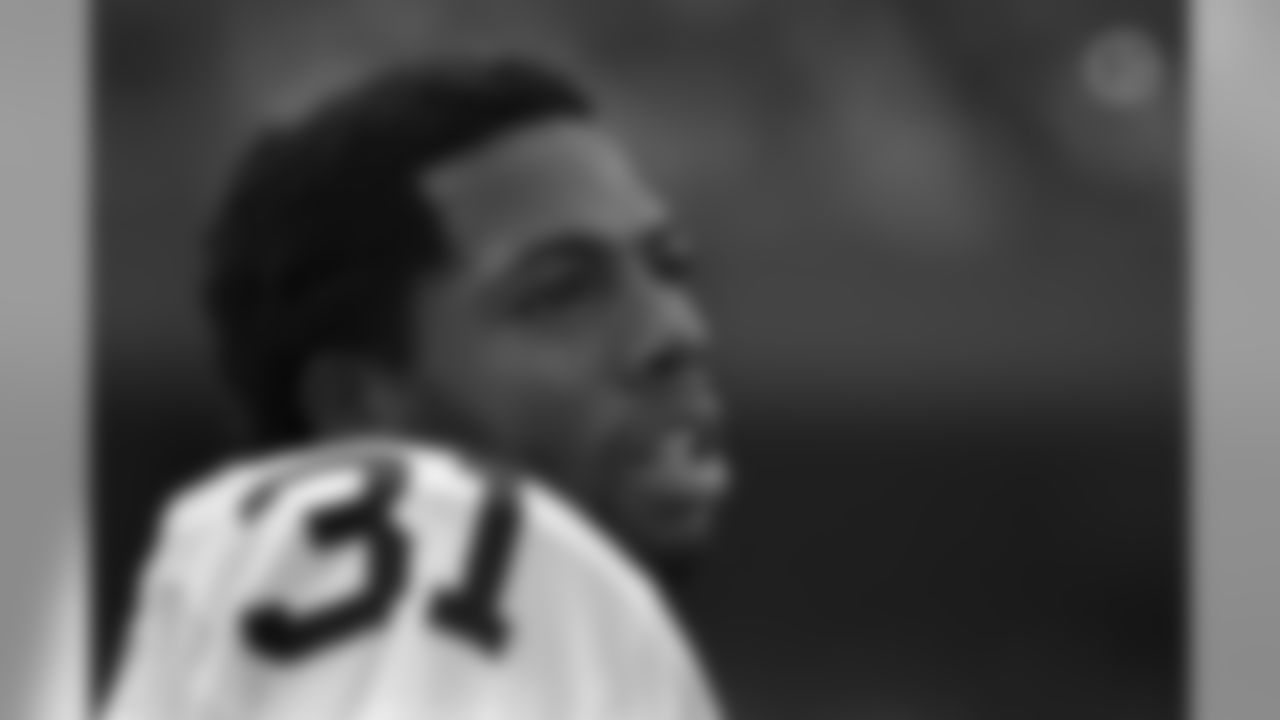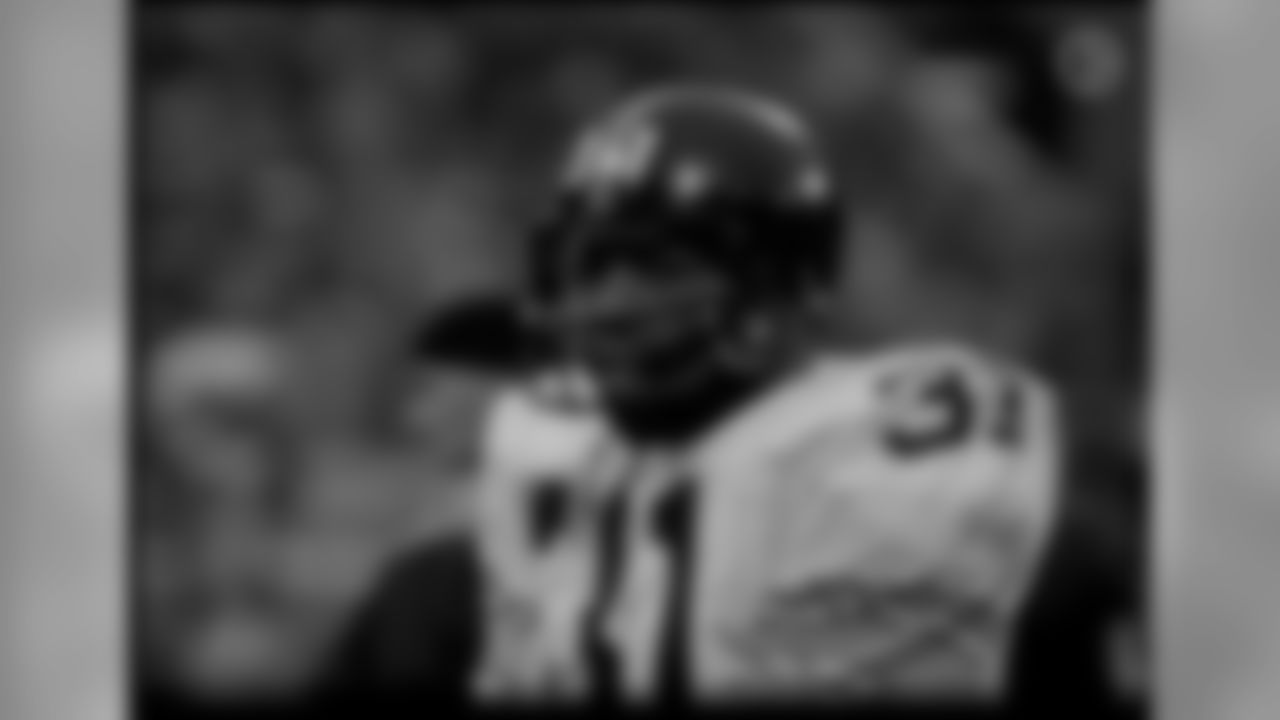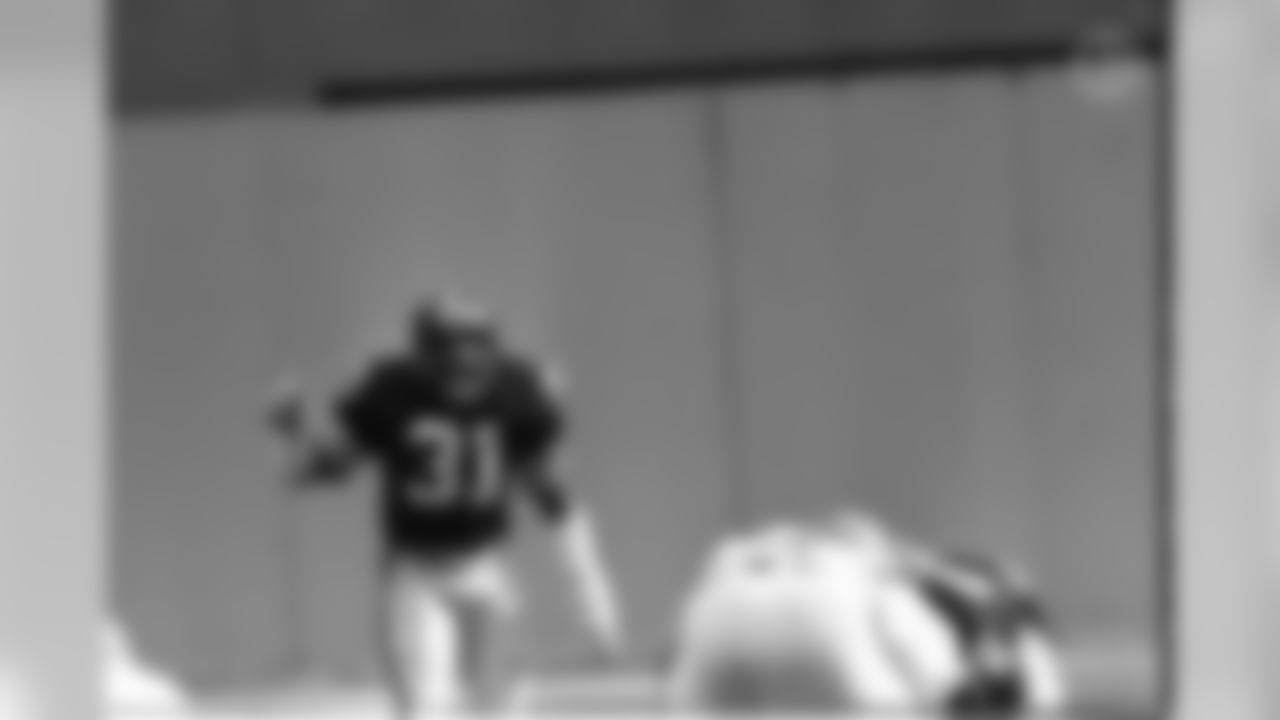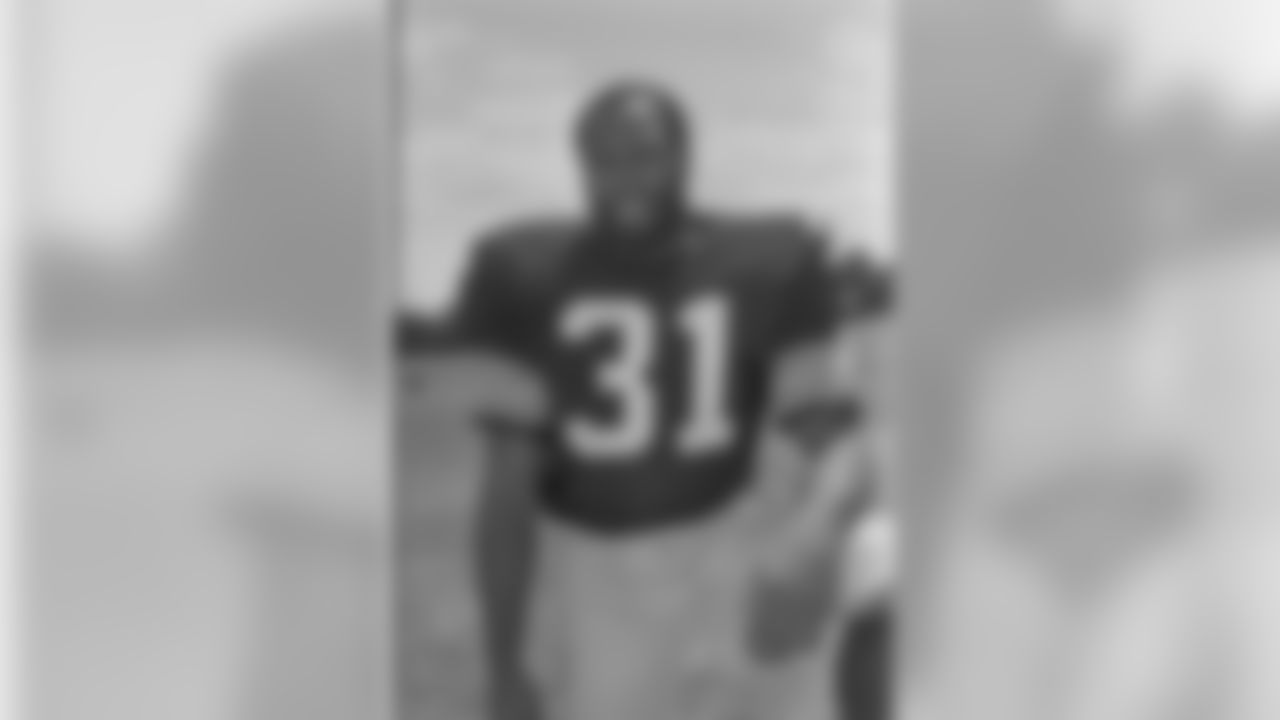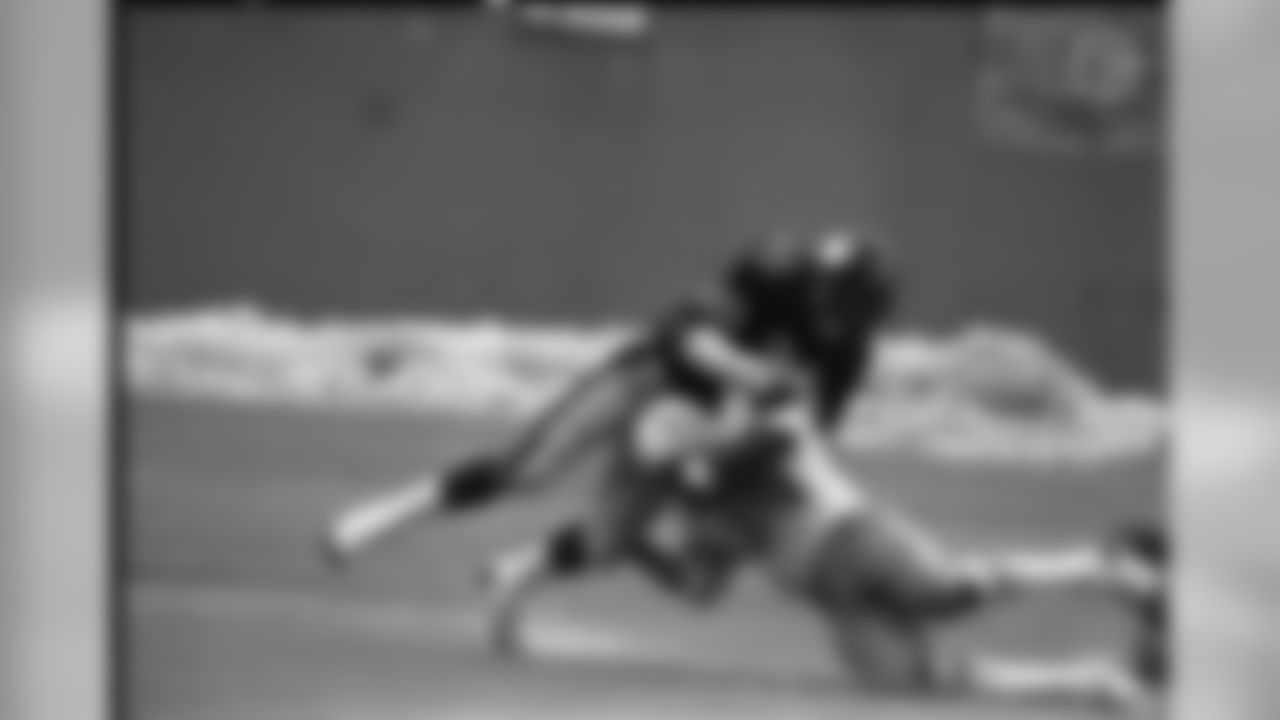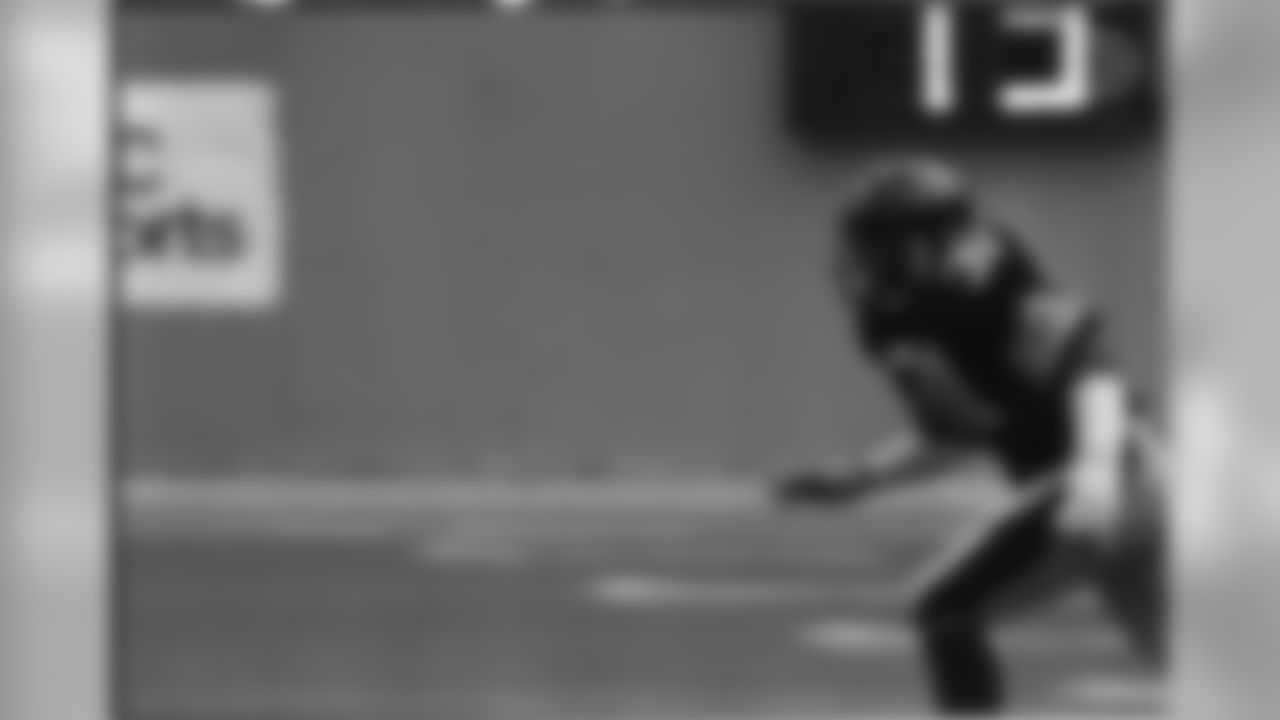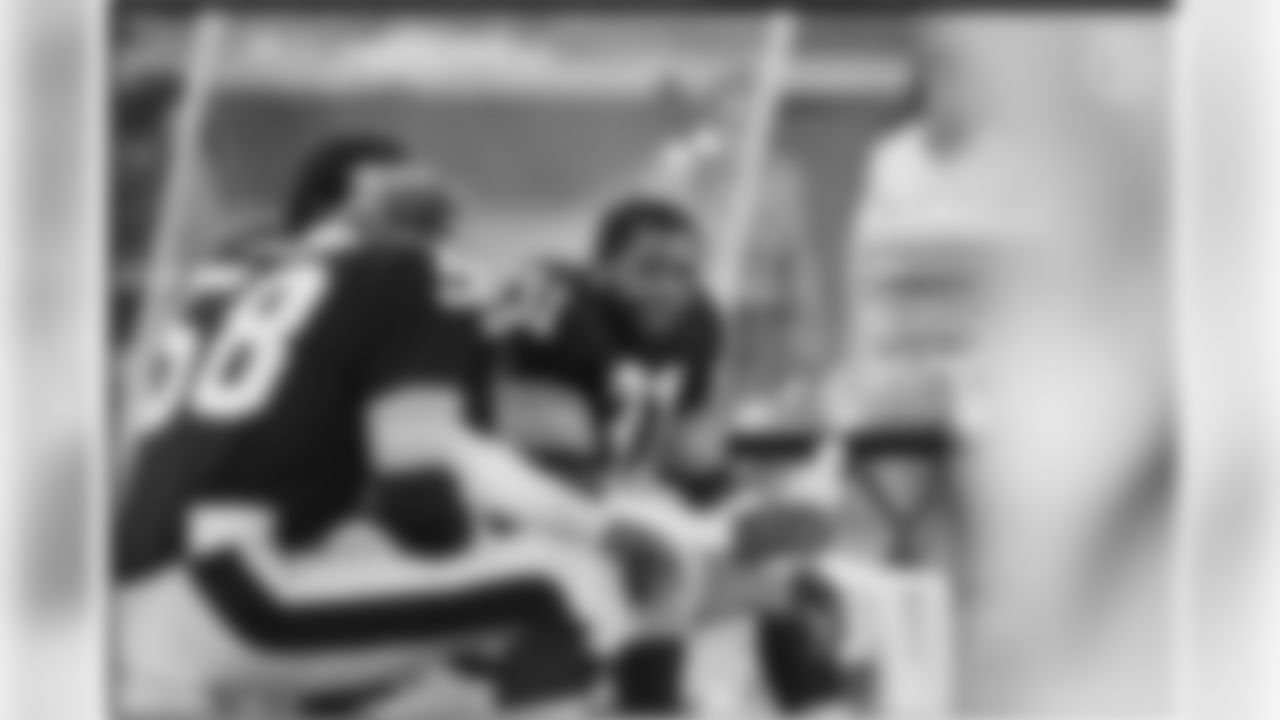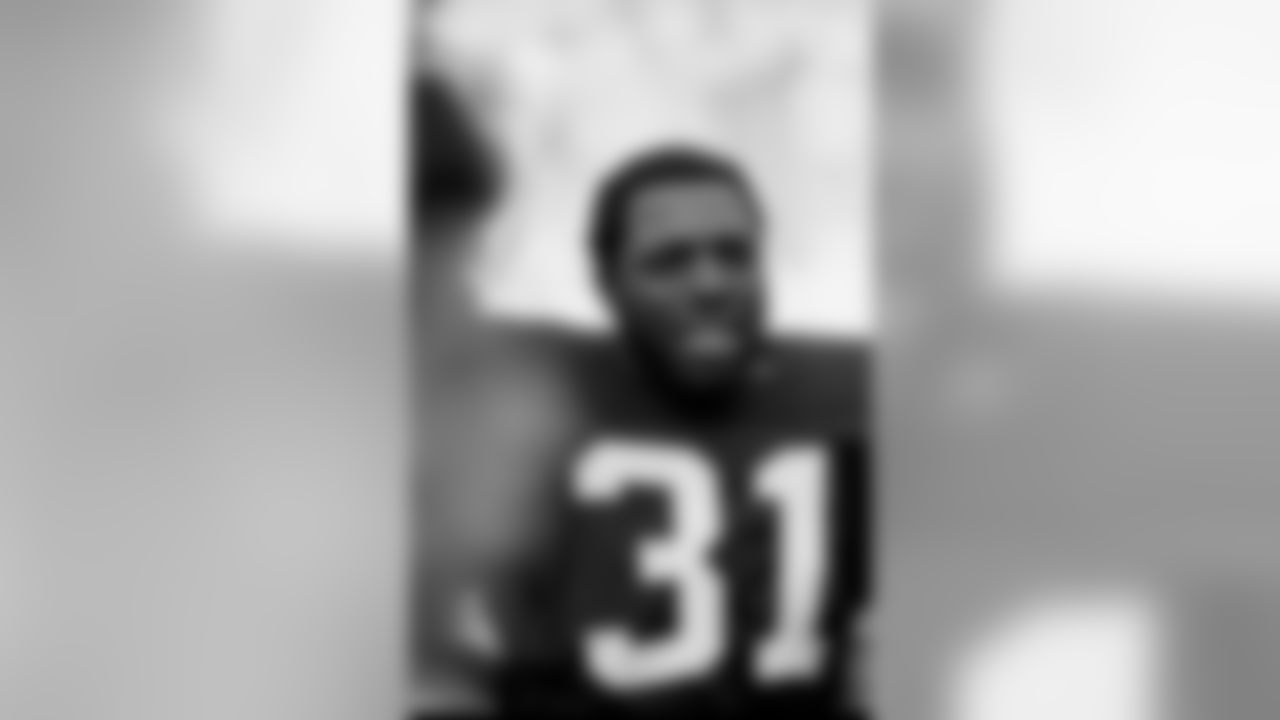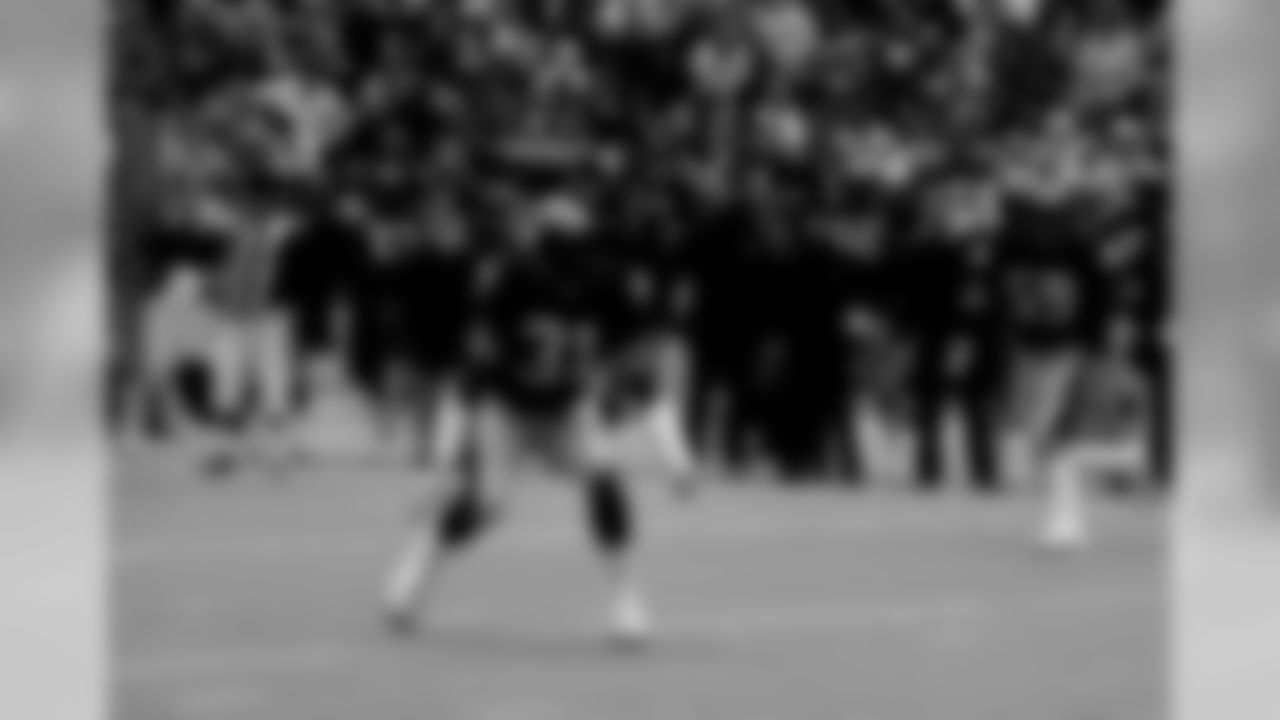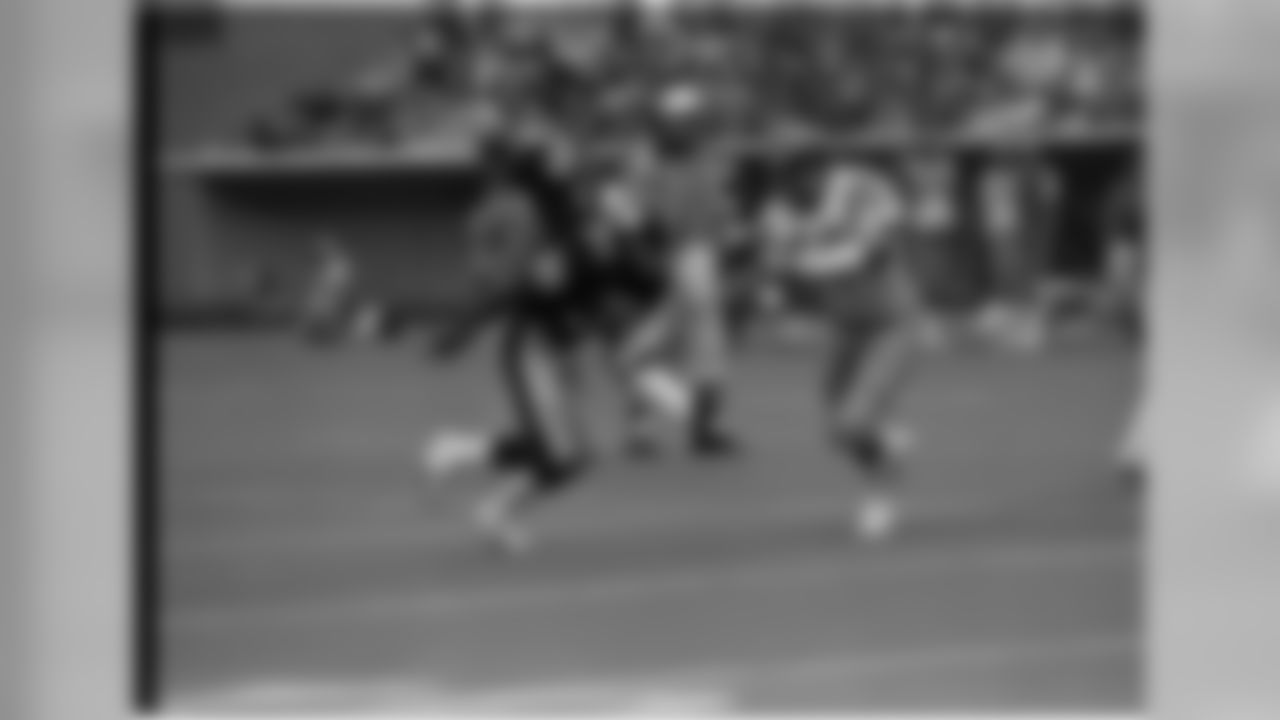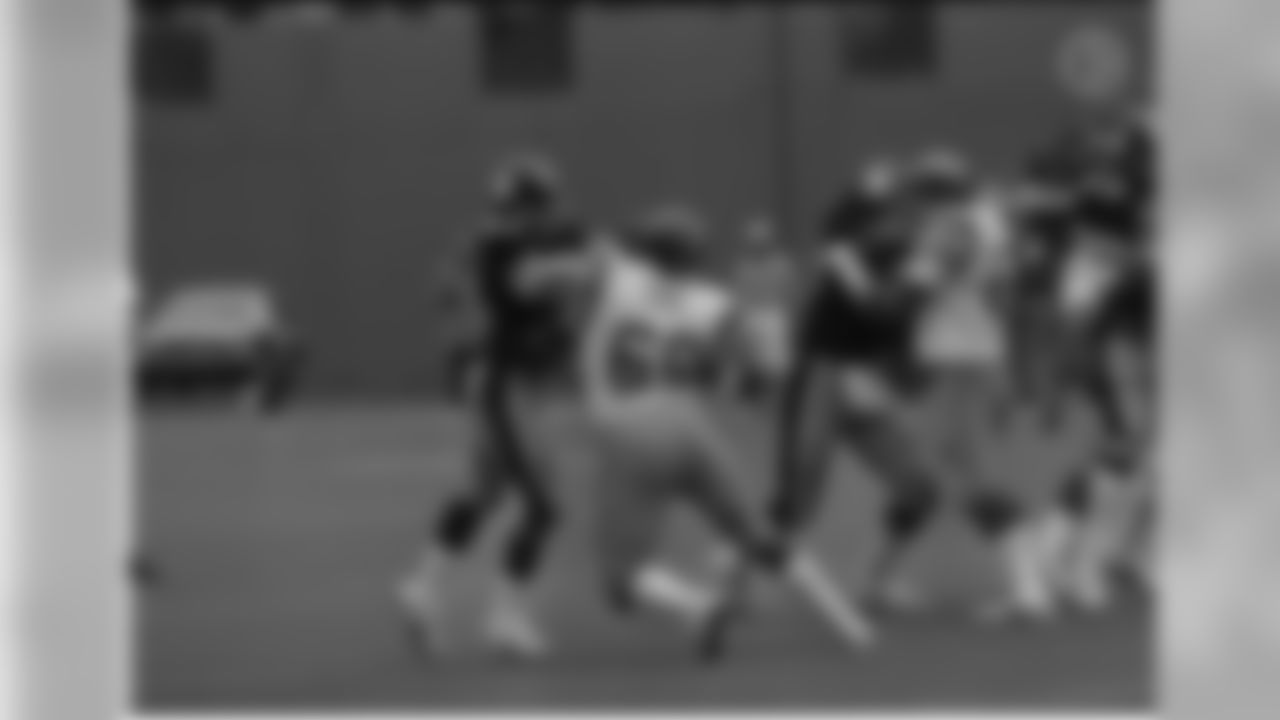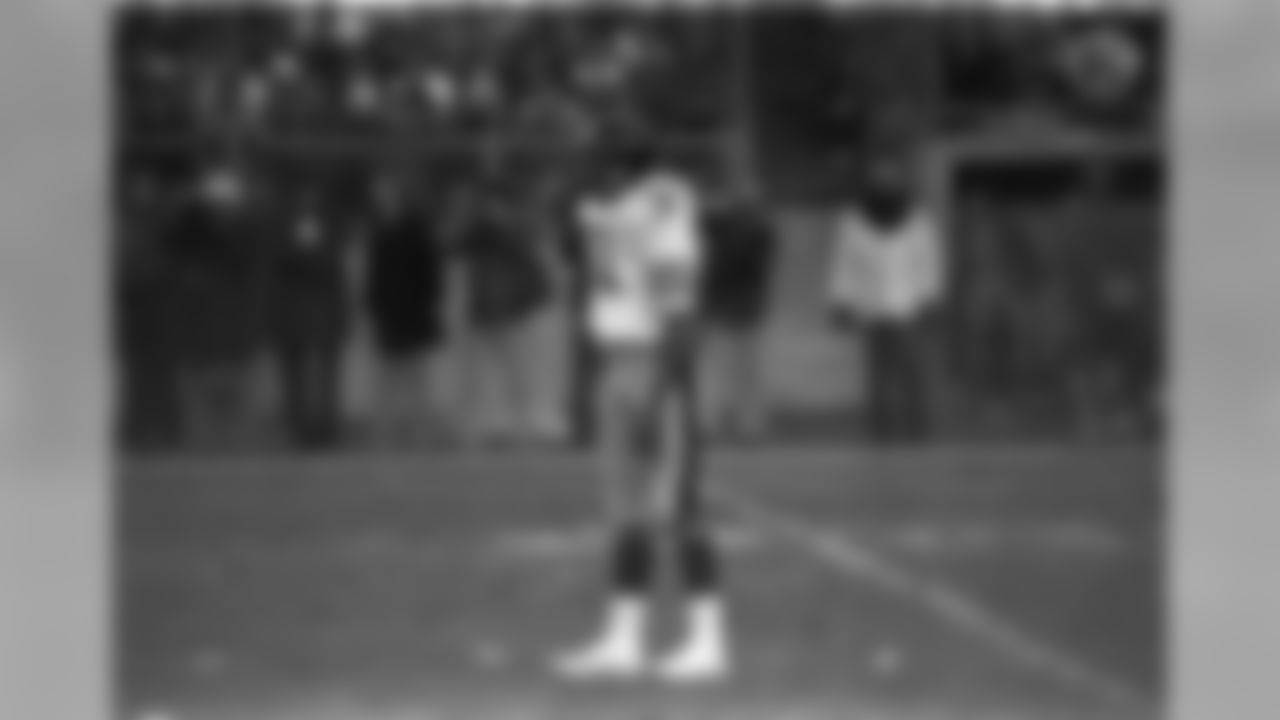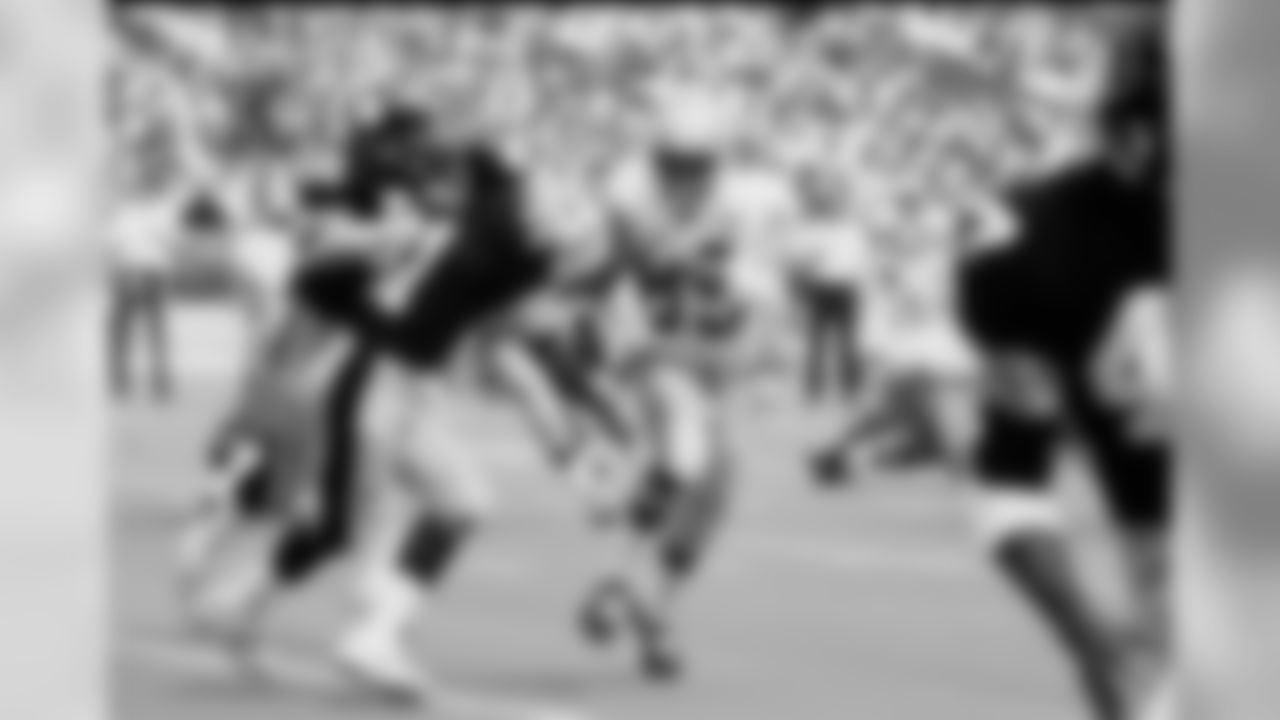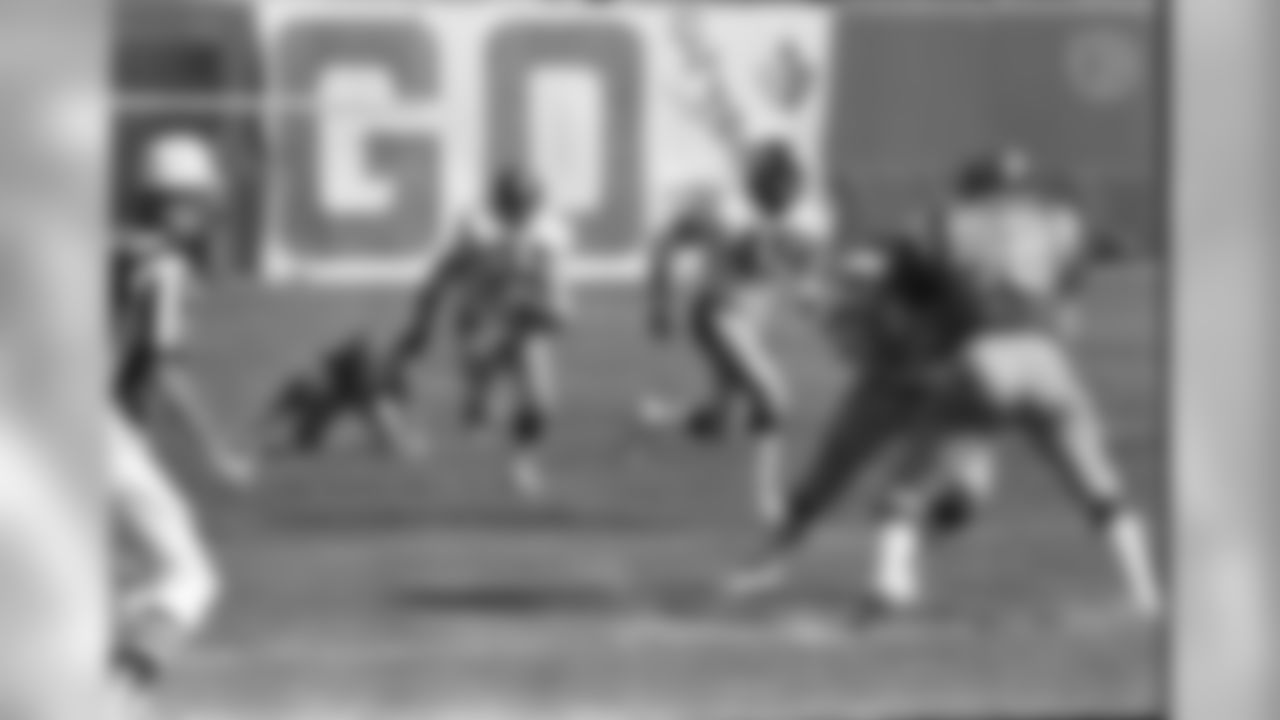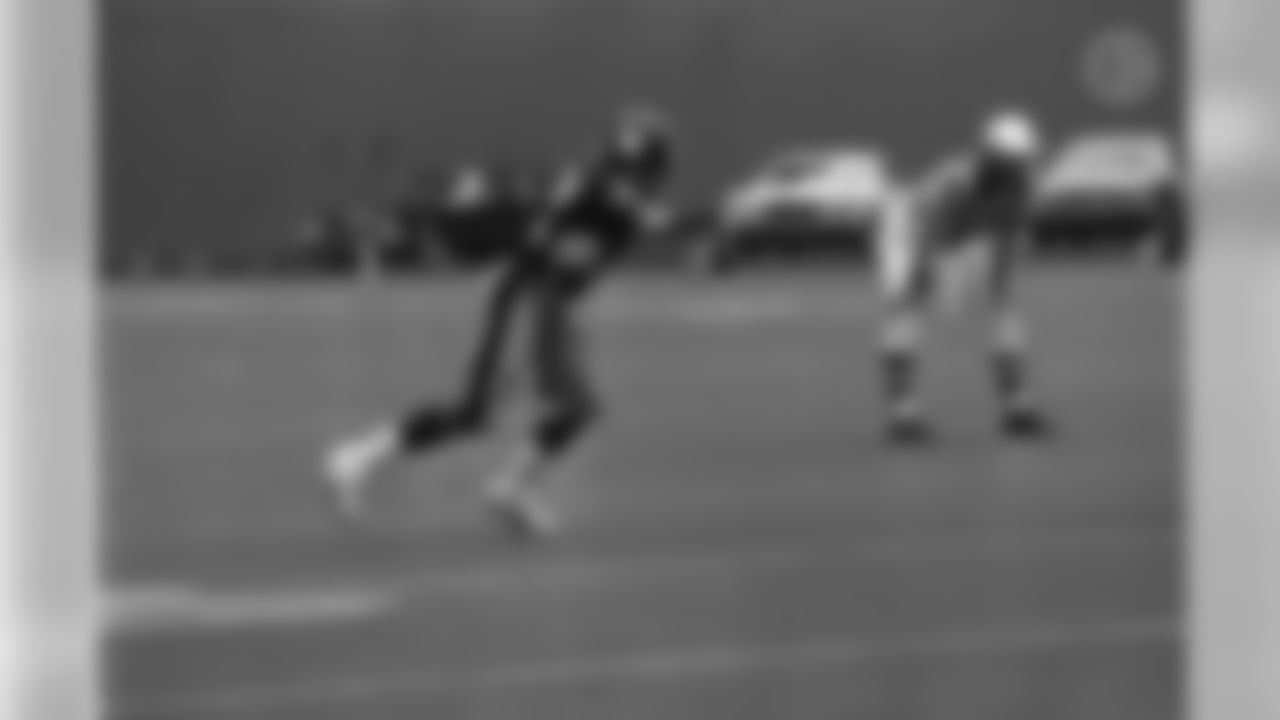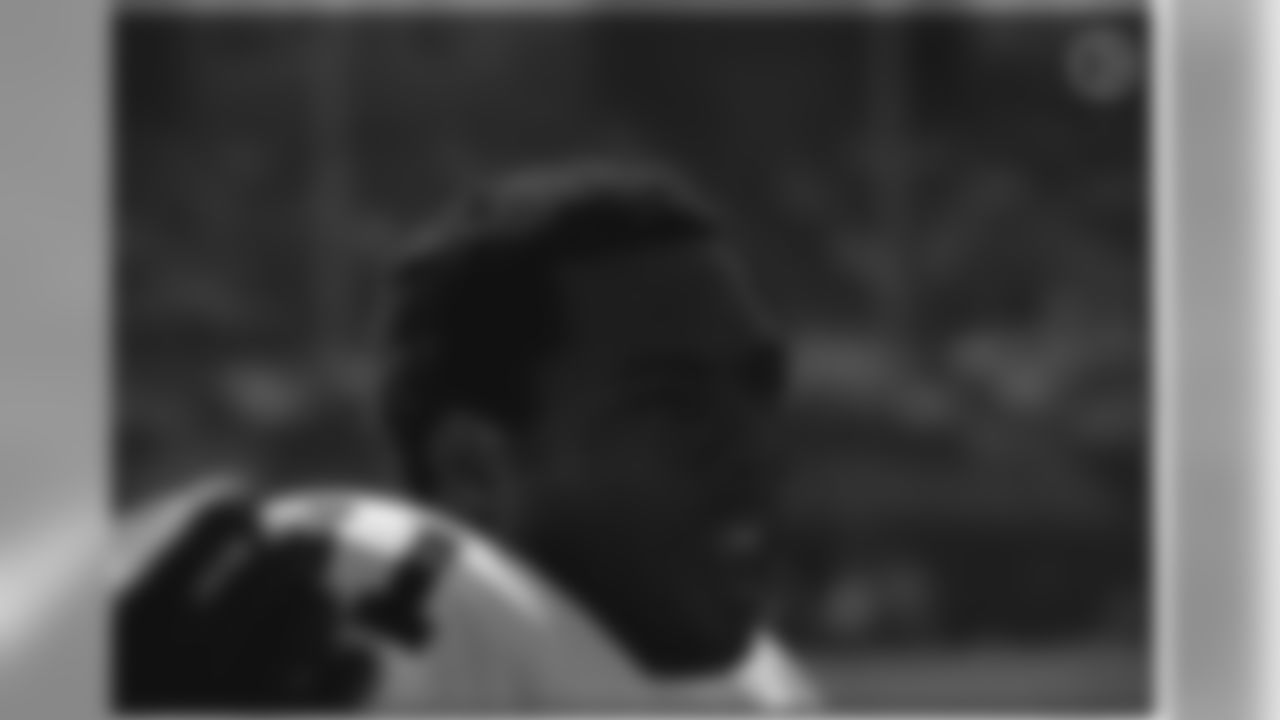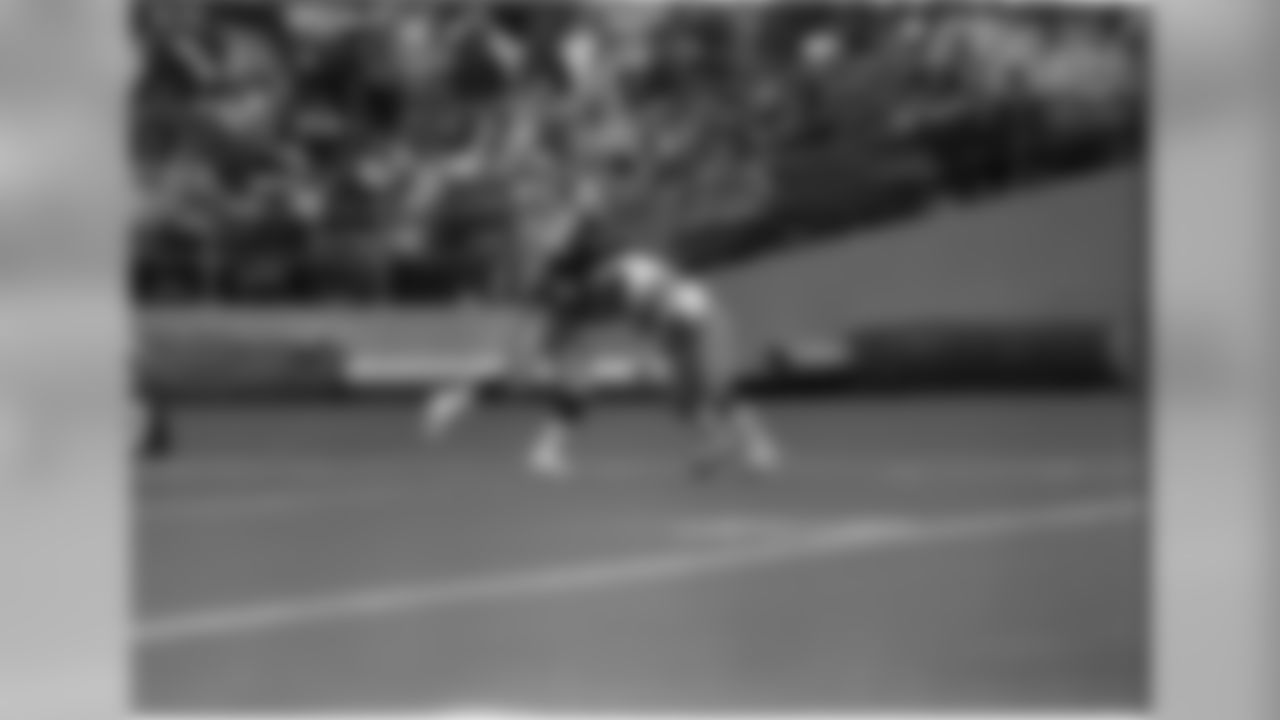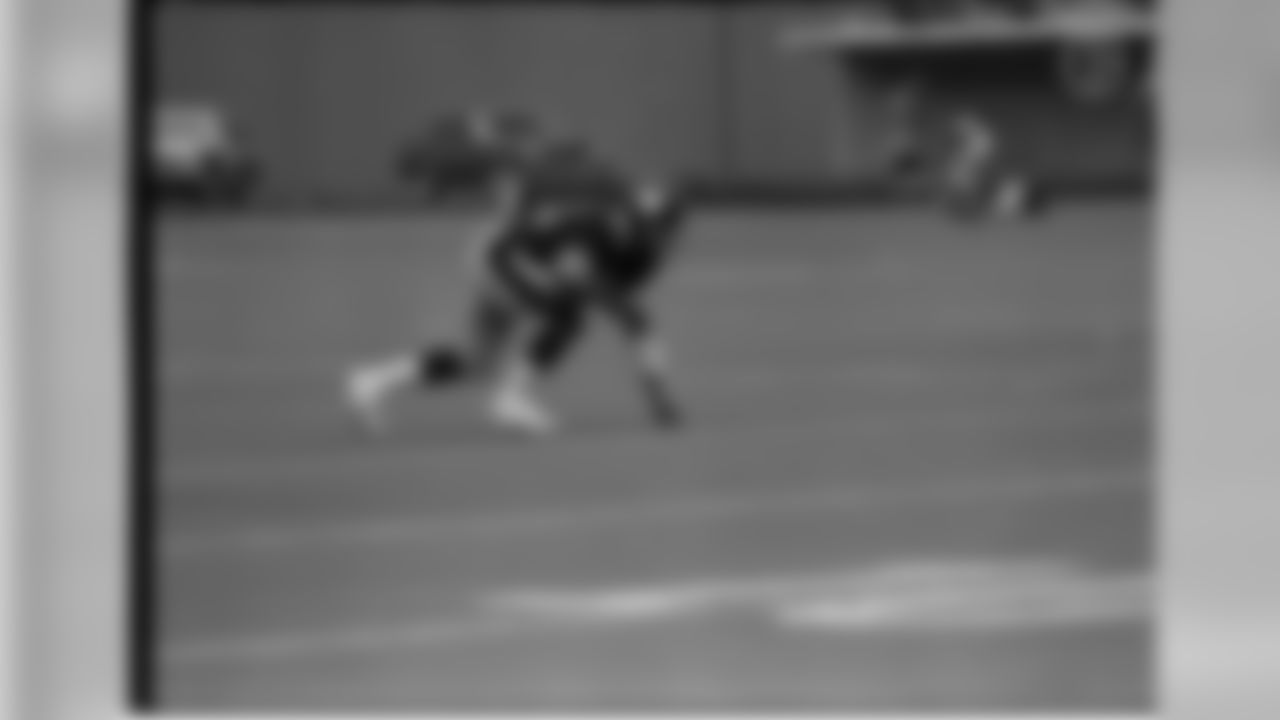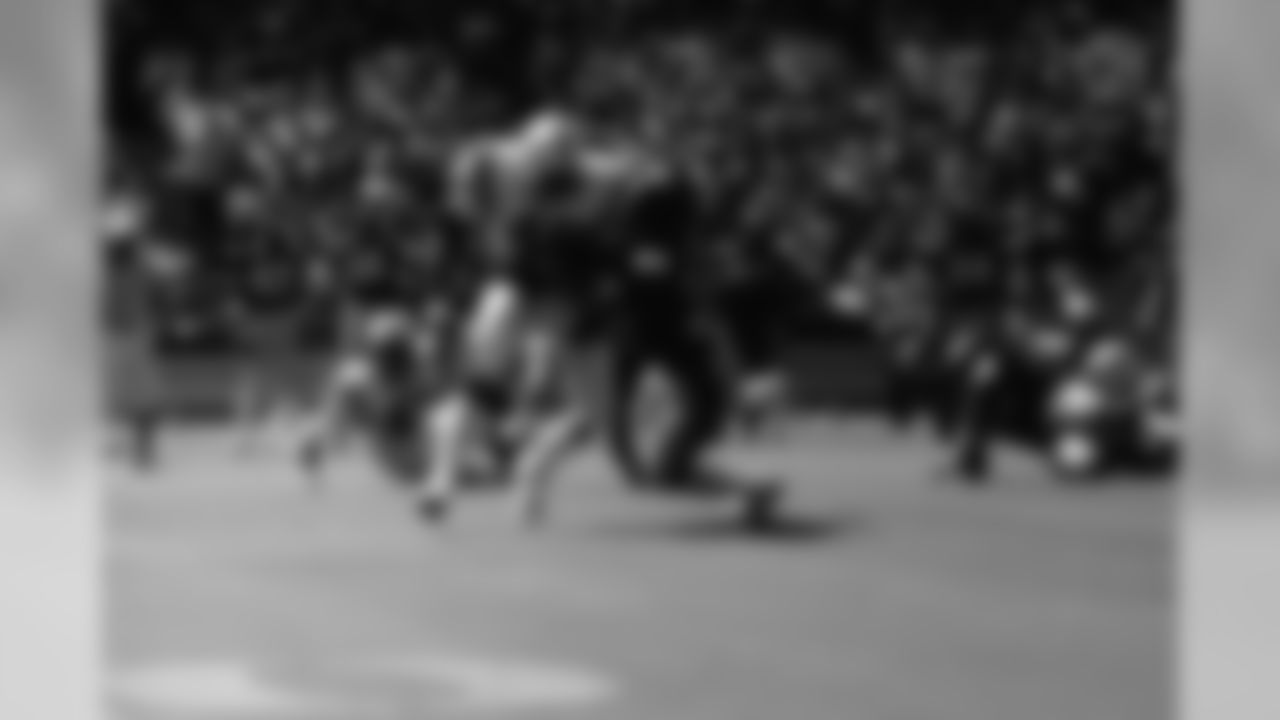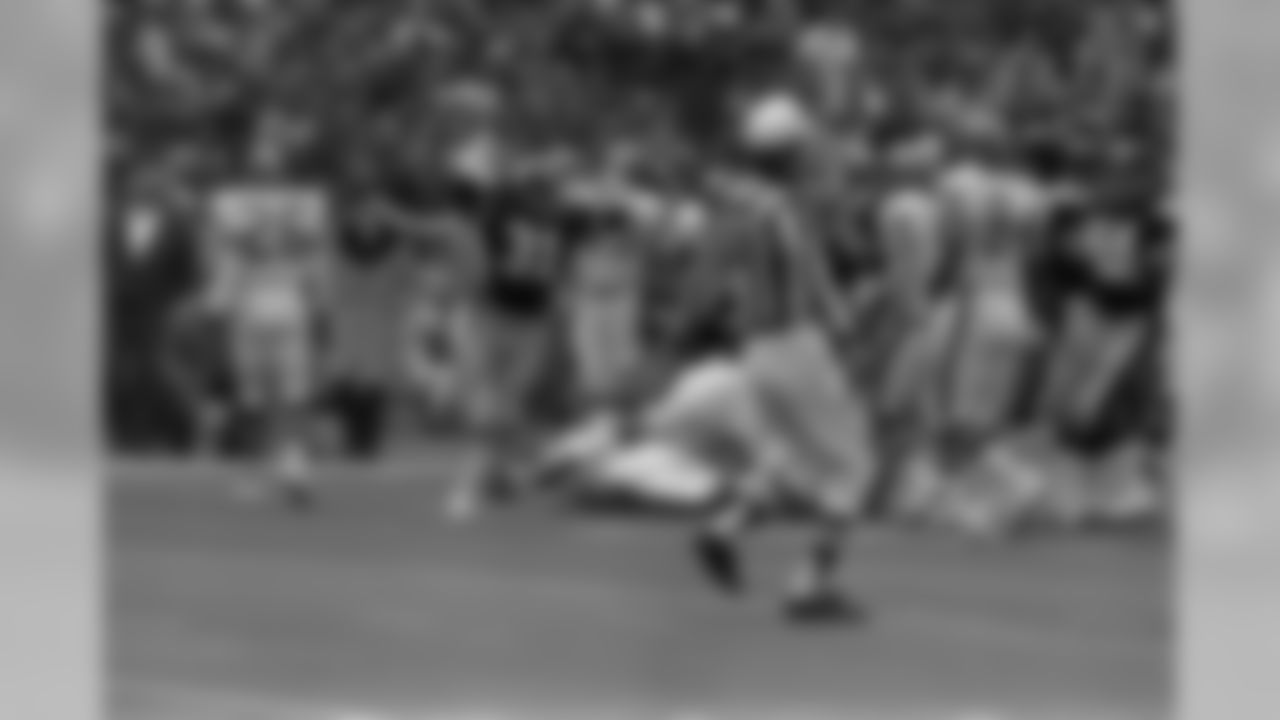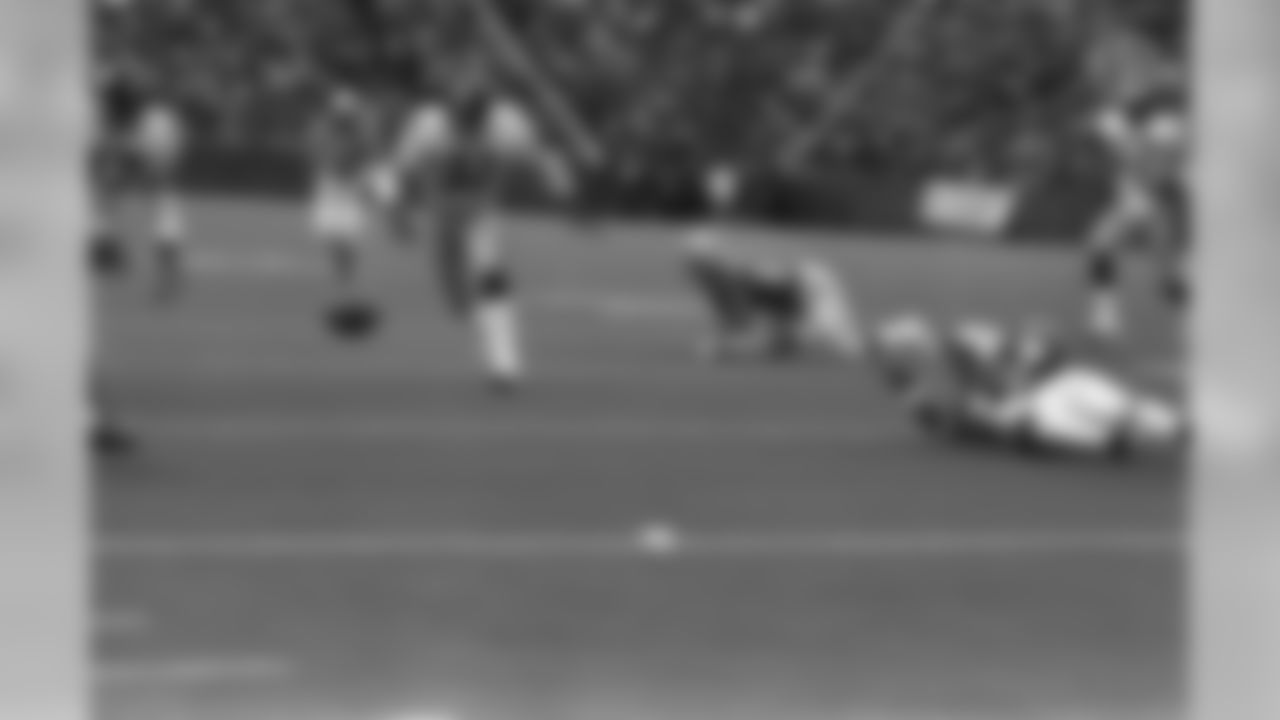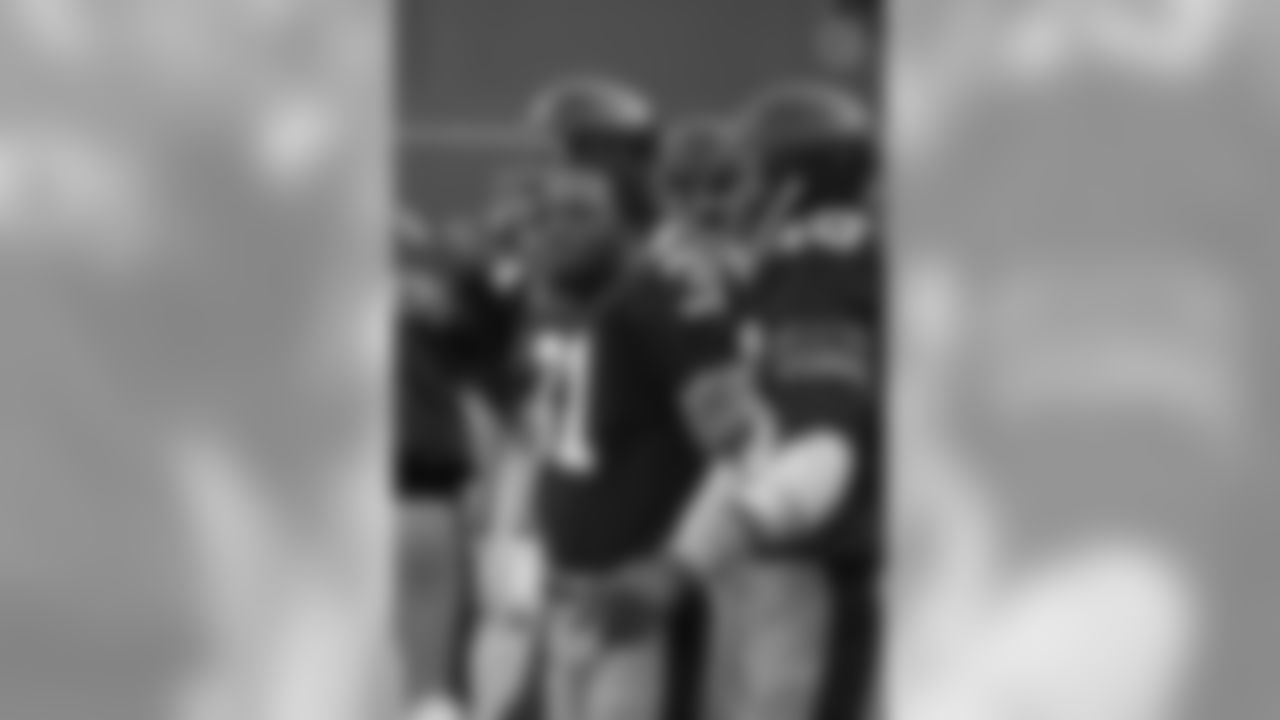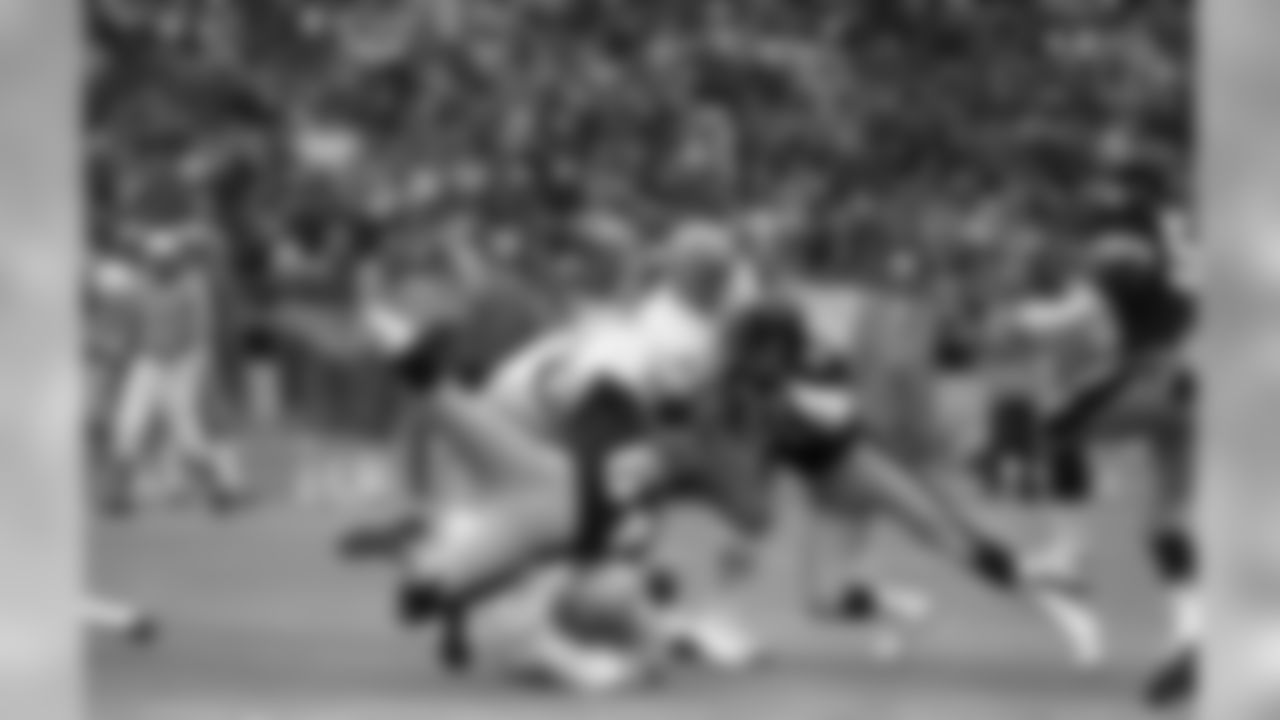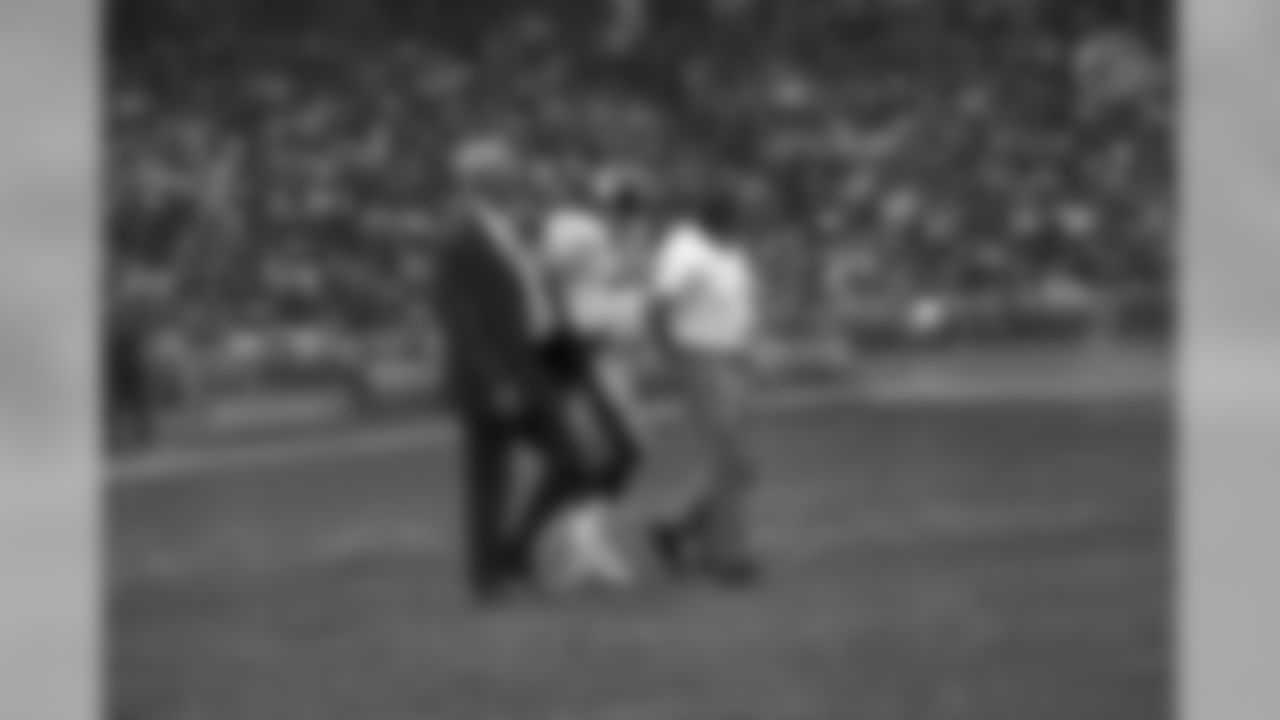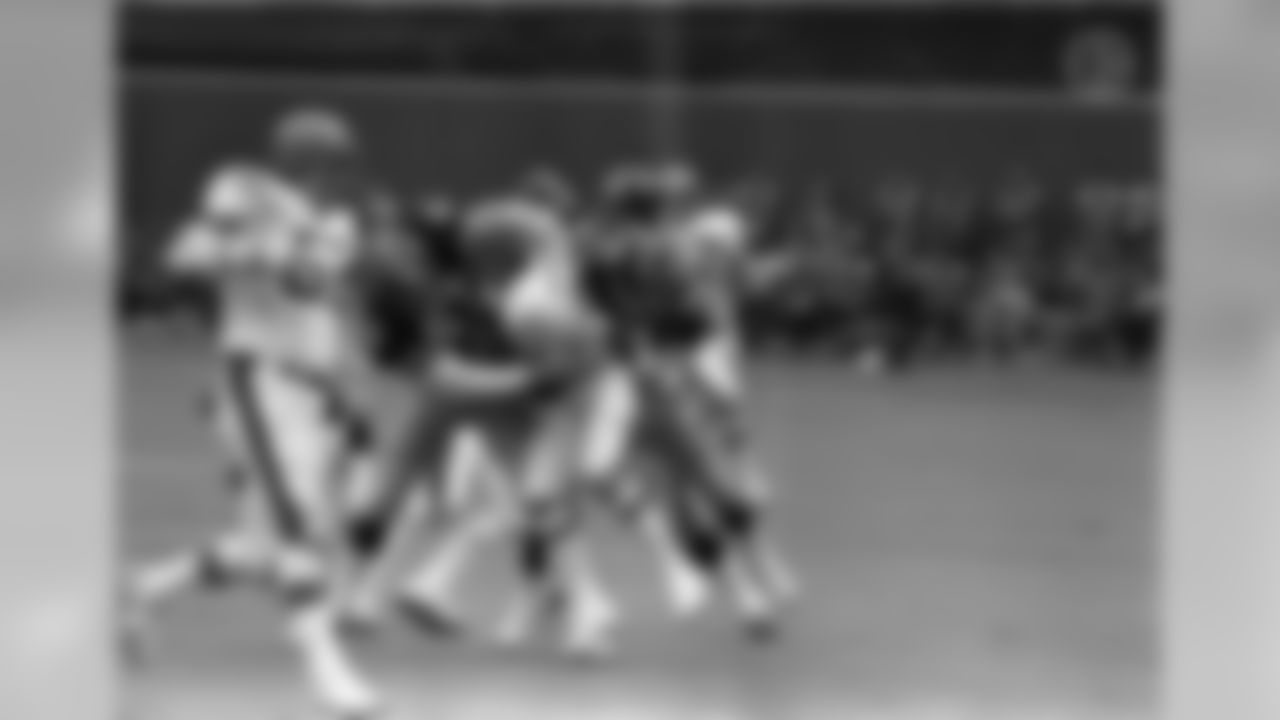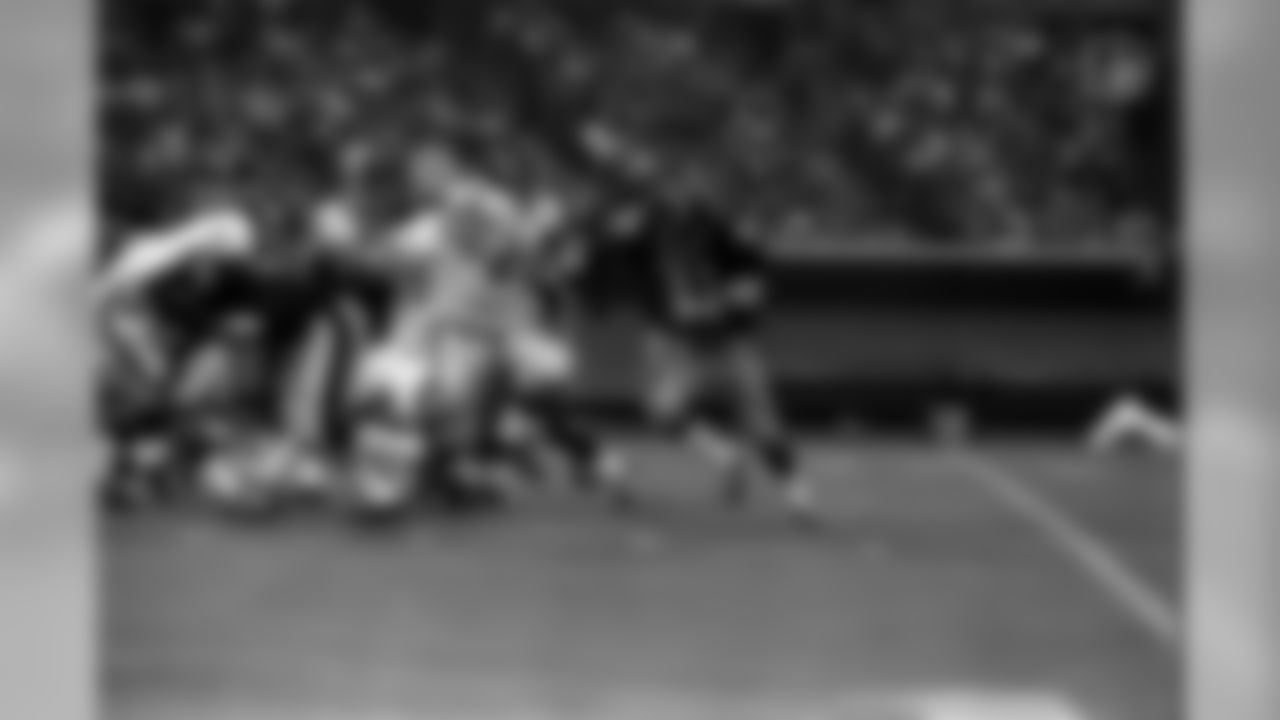Usually, you don't get the opportunity to have both.
There is one kind of safety who's aggressive and physical, a force around the line of scrimmage and especially so against the opponent's running game. He can take on blockers and tackle running backs who often out-weigh him by a considerable amount. And quite often, the tackles he makes are punishing, which makes him a factor in the war of attrition that goes on during every NFL game every weekend of the season.
When this kind of safety isn't lurking around the line of scrimmage, hunting for running backs, he's often patrolling the secondary looking to inflict the same kind of punishment and intimidate receivers from doing their jobs. He is the reason their coaches have told them to "keep their heads on a swivel," and those who ignore the warning often discover their arms have grown shorter whenever they might be tasked to reach for a slightly overthrown pass.
Then there is the other kind of safety, one who delivers punishment without using a sledgehammer. He's slick, moves with stealth, gets into and out of apparent collisions with the hands of a pickpocket. And just when his mark breathes a sigh of relief at apparently escaping without a scratch, the mark will realize something valuable was stolen from him and is being whisked away in the opposite direction.
With Donnie Shell, the Steelers had both.
At South Carolina State, Shell played linebacker and then some safety for Coach Willie Jeffries, and as a senior there Shell was named First Team All Mid-Eastern Athletic Conference (MEAC), and he was voted to the Division I-AA Associated Press All-America Team. But even with those honors capping off a nice four-year career at South Carolina State, the 1974 NFL Draft concluded its 17 rounds without any team picking this 5-foot-11, 190-pound safety who, in their judgment, hit like a linebacker but played in coverage like a linebacker, too. Shell would get a shot at a professional football career after signing as a rookie free agent, and he chose the Steelers because Bill Nunn told him he would get a fair shot to make the team, and Jeffries had known Nunn long enough and well enough to take him at his word.
"I just wanted an opportunity and Pittsburgh was a team that fit for me. They gave me a fair chance, I worked hard and made the team," said Shell.
Shell ended up with an enhanced opportunity when the NFL Players Association called for a strike that upset the normalcy of training camp all across the league. With many of the established veterans walking the picket lines, rookies and other borderline players reported and went about the business of trying to make an NFL roster.
FINDING A SPOT ON SPECIAL TEAMS
In Pittsburgh, Shell was part of a rookie class that would become the most highly-decorated in NFL history, because four of the team's first five draft choices would be elected to the Pro Football Hall of Fame at the end of their careers. For his part, Shell was simply doing his best to make an impression, and the first person he impressed was the Steelers special teams coach.
Back then, Chuck Noll coached special teams as part of his overall duties, and there is always room for an aggressive, sure tackler on the kick coverage units. When the Steelers made their final roster cut-downs following training camp and a 6-0 preseason, the special teams coach convinced the head coach, or maybe it was the other way around, to keep Shell as one of the seven defensive backs on the 47-man roster.
Through three NFL seasons, Donnie Shell covered punts and kickoffs. And his veteran teammates came to notice what Chuck Noll first saw back in the summer of 1974 at Saint Vincent College. "He was a linebacker in college," said Joe Greene, "and we called him 'Torpedo.' Donnie wasn't supposed to be the fastest guy, but he was always the first guy down under the kick. And he made collisions. Big collisions."
Ask Billy "White Shoes" Johnson about being stalked by the "Torpedo." In 1975, Johnson led the NFL with three touchdowns and a 15.3-yard average on punt returns, and he also had another touchdown to go with a 24.2-yard average on kickoff returns. But those numbers were in spite of what happened on Monday, Nov. 24 that season in the Astrodome when the 7-2 Oilers hosted the 8-1 Steelers with Frank, Dandy Don, and Howard on hand to chronicle the events.
In that game, which the Steelers dominated in every facet and won, 32-9, Johnson returned two punts for 10 yards and four kickoffs for 63 yards. There is a clip made famous by NFL Films of Steelers defensive end Dwight White mocking the touchdown dance Johnson performed after each of his scores as White and Shell walked off the field together when the rout was complete.
In the meantime, though, Shell was not content with his role, even though he had become an integral part of a back-to-back Super Bowl Championship team. So he worked on his craft, and worked on his craft, and worked on his craft. And by the time the 1977 was about to begin, Noll decided it was time to make a change in his famous, dominant, record-setting defense.
INTO THE STARTING LINEUP
After a 1976 season in which the Steelers defense posted five shutouts and allowed only 28 points during a nine-game winning streak, eight players on the team's starting defensive unit were voted to the Pro Bowl, including both safeties – Glen Edwards and Mike Wagner. Still, when Noll saw an opportunity to improve, he wasn't the type to allow convention to get in his way.
Wagner picks up the narrative from here.
"(Shell) even knocked two Pro Bowl safeties around at the beginning of the 1977 season," remembers Wagner. "We had some changes to the coaching staff the previous year at the assistant level, and (new defensive coordinator) Woody Widenhofer came to me at the beginning of the year and said, 'Mike, we're moving you over to free safety.' I kind of looked at him and said, 'I've been playing strong safety and been playing it pretty well, I thought.' He said, 'Well, we want to get Donnie into the lineup and see if he can play strong safety. We think free safety is more of a natural position for you, Mike, and it should extend your career. You won't have to make as many tackles.' I said, OK, whatever, but the open-ended question was, 'Well, what about Glen Edwards, who also had been in the Pro Bowl the year before and had been a great player for us?' That was never explained to me, but I just shrugged my shoulders, and said, OK.
"In the third game of that (1977) season, I cracked a vertebrae and was out for the rest of the year. Donnie continued to play strong safety, and they put Glen Edwards back in at free safety. Donnie was a linebacker in college, and so he was used to being more physical and playing at the line of scrimmage. I have some videos from the 1970s that I still watch from time to time, and it's remarkable how many times during the telecast a broadcaster might be talking to the opposing coaches, and they always singled out Donnie as the real challenge, as the player in the back end who gives them the hardest time."
After the 1977 season, Edwards was part of a housecleaning project by Noll that rid the team of several players who had become malcontents, individuals perpetually dissatisfied with their contracts. For his part, Shell continued to work on his craft as a safety capable of making plays on the football in pass coverage, and his insertion into the lineup allowed Noll to have an offense and defense in place for what was to come.
TAKING ADVANTAGE OF BOTH ENDS OF THE 'MEL BLOUNT RULE'
Starting with the 1978 season, there would be new rules governing how defenses could play pass defense in the NFL, and the rules were going to liberalize pass blocking and restrict all contact between defensive backs and all eligible receivers beyond 5 yards of the line of scrimmage. While the Steelers offense would capitalize on these rules changes by unleashing Terry Bradshaw, Lynn Swann, and John Stallworth, Noll also knew he was going to have to find a way to deal with opponents who would be doing the same thing to his defense.
Joe Greene understood the versatility Shell brought to the secondary when opponents decided to test the Steelers through the air, but he also had an appreciation for what Shell provided in the annual home-and-home series with the Houston Oilers and Earl Campbell that for the 1978-79 seasons was for nothing more significant than a trip to the Super Bowl.
On Dec. 3, 1978, the 9-4 Oilers were hosting the 11-2 Steelers in a rematch of the game months earlier at Three Rivers Stadium that Houston had won. A season sweep of the Steelers would put the Oilers in the driver's seat should the AFC Central Division race get thrown into tiebreakers come the end of the regular season.
That rematch still was in the very early stages, but Campbell was helping the Oilers offense take physical control of the game. On his seventh carry that would leave him with 41 yards rushing, however, Campbell had a close encounter with "Torpedo." In the process of spinning out of one tackle, Campbell exposed his midsection and Shell delivered a big hit. It was clean even by today's player-safety-initiative standards, but it cracked one of Campbell's ribs and sent him to the sideline for the rest of a game the Steelers would win, 13-3.
"There was that game in Houston and Donnie came up and hit Earl Campbell before he had a chance to turn up the field. Caught Earl in the ribs," said Greene, "and for the first time in all of my playing days, I don't want to say I wanted to see Earl get hurt, but I sure was glad he left the game. And it was Donnie who hit him. We had some knock-down, drag-outs with the Oilers, and Donnie was always the hitman. He gave muscle to our football team. That is what we were known for on our defense – contact. And we had some contact people back there, and Donnie didn't take a backseat to anyone."
FROM TORPEDO TO BALLHAWK
But what made Shell special was that he developed another dimension to his game, a dimension not many other NFL "hitmen" had the skills or the work ethic to develop. In the 147 games Shell played – all starts – from the start of the 1978 season until he retired following the 1987 season, Shell had 45 interceptions and 15 fumble recoveries. Those 60 total takeaways gave him an average of .41 takeaways per game, outstandingly consistent production for a strong safety who still had significant responsibilities vs. the run.
Shell retired with 51 interceptions, still the most by a strong safety in NFL history, plus 19 fumble recoveries, to finish his career with 70 takeaways.
"Donnie was an all-around player," said Greene. "He gave us flexibility vs. the offenses, because we didn't have to change our personnel grouping when the offense went from the standard look of two wide receivers, tight end, and two running backs, to three wide receivers and sometimes four (wide receivers). Donnie would line up in the slot and cover the slot receiver, which is what teams try to do all of the time. Offenses want to get you in a mismatch situation in coverage, and because we had Donnie they couldn't do that to us. We could play all of our coverages and all of our defenses because of Donnie Shell. A Hall of Famer? In my view, yes."
In Tony Dungy's view, as well. A member of the Hall of Fame as a coach, Dungy roomed with Shell in 1977-78 when the two were both safeties with the Steelers.
"Donnie played the most demanding position on a defense that is considered one of the best ever. He played in the box like a linebacker, covered tight ends down the field, and patrolled the deep half of the field in the Steelers Cover-2 (scheme)," said Dungy. "As a person who watched a lot of video as a player and a coach beginning in 1977, I can tell you Donnie Shell is the best safety from that era not yet in the Hall of Fame."
Take a look at some of the best photos of DB Donnie Shell


